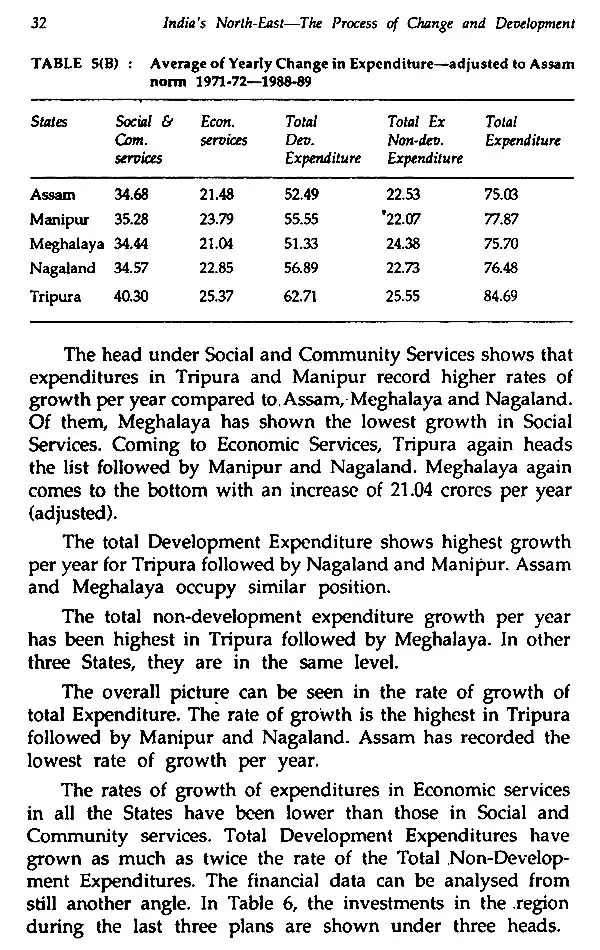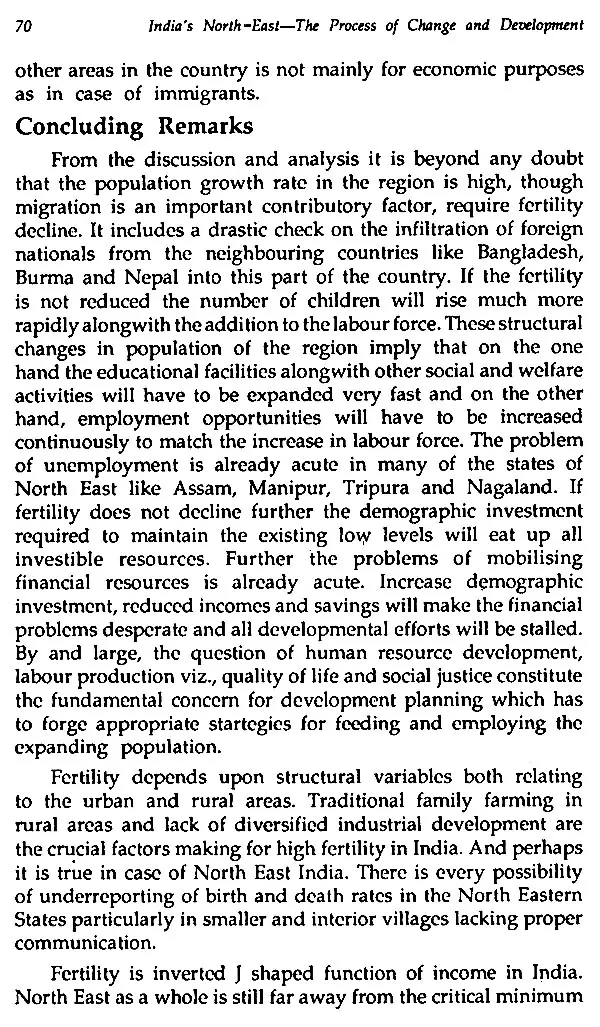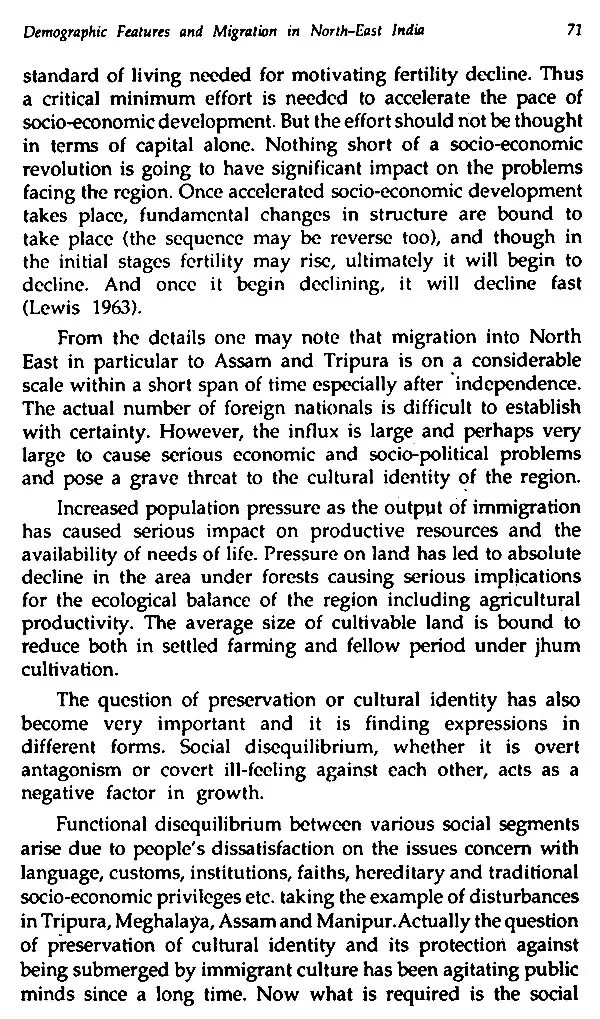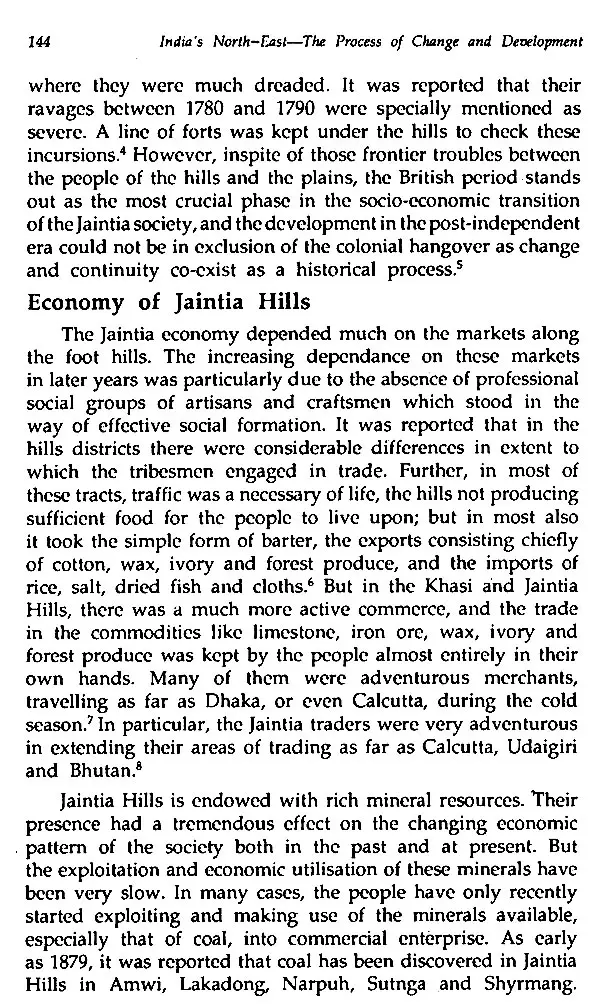
India's North-East- The Process of Change and Development
Book Specification
| Item Code: | UAM879 |
| Author: | R.K.Samanta |
| Publisher: | B.R. Publishing Corporation |
| Language: | English |
| Edition: | 2020 |
| ISBN: | 9788176463300 |
| Pages: | 208 |
| Cover: | HARDCOVER |
| Other Details | 9.00 X 6.00 inch |
| Weight | 380 gm |
Book Description
The concept of change and development is a dynamic one apprehending each and every aspect of human existence. Development of any society stems from its integral socio-cultural process. It takes within its ambit the natural environment, social relations, education, production, consumption and welfare. The primary objective of development is to satisfy the essential material needs of the society, but not at the cost of local environment and people's culture.
People change as they move from a condition of lower to higher self esteem and when people change, the society to which they belong also change, and the country moves with them too. But this change and development process did not take place in north-eastern region of India over the decades, though this region is endowed with rich resources of land, water, forests, minerals and beautiful people with lots of stamina and deep rooted culture. It also boasts of egalitarian tradition in control of land and land based resources. Anyone would have though that such a typical region would have been the cherished pride of the country; instead, it is the most backward and undeveloped one.
The reasons may be many as indicated before by several academics, social workers and political leaders but systematic studies with supporting evidences and pragmatic solutions by the scholars are lacking. Therefore, the book India's North-East-The Process of Change and Development is a modest effort of the academics and scholars living and working since decades in the north-eastern region to bring together the various viewpoints of change process for development in the region. The compilation is aimed through exploring the reasons for backwardness of this region and providing strengths and means to overcome the limitations of change and development in the region.
R.K. Samanta (b. 1948), who served as Director of Agricultural Extension and Communication at National Institute of Agricultural Extension Management (MANAGE), Hyderabad, India, obtained his Ph.D. degree in Agricultural Extension from B.C. Agriculture University, West Bengal, India. Dr. Samanta had advanced training in Agriculture Development and Communication, Extension Education Management and Administration in Cornell, Syracuse, and The Ohio State Universities and is presently Joint Director (Trg.) at the National Academy of Agricultural Research Management (NAARM), Hyderabad.
The concept of change and development is a dynamic one apprehending each and every aspect of human existence. Development of any society stems from its integral socio-cultural process. It takes within its ambit the natural environment, social relations, education, production, consumption and welfare. It springs from the heart of each society and does not depend on any outside model or paradigm. The primary objective of development is to satisfy the essential material needs of the society, but not at the cost of local environment and people's culture.
People change when there is a felt need, when supported by a respected other, when their change plan moves them from general goals to specific plans and actions. People change as they move from a condition of lower to higher self-esteem. And when people change, the society to which they belong also change, and the country moves with them too. But this change and development process did not take place in north eastern region of India over the decades.
Interestingly, this region is endowed with rich resources of land, water, forests, minerals and beautiful people with lots of stamina and deep rooted culture. It also boasts of egalitarian tradition in control of land and land based resources. Land is largely owned by the community and the incidence of landlessness is negligible. Anyone would have thought that such a typical region would have been the cherished pride of the country, instead it is the most backward and undeveloped one.













